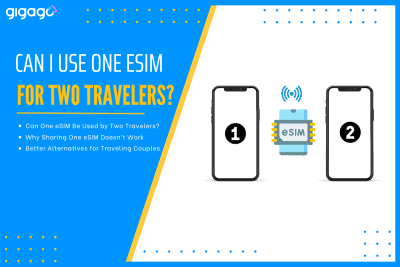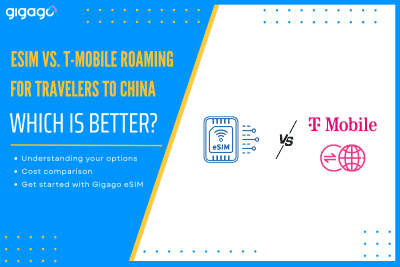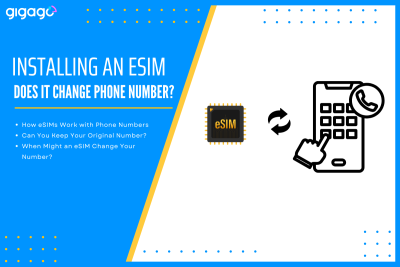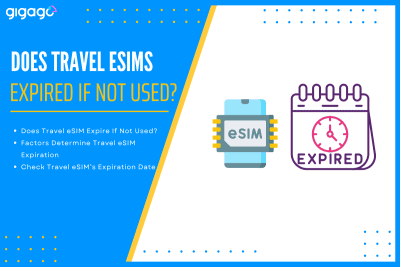When couples or friends travel together, it’s common to look for ways to save on mobile data. One question often comes up: “Can two travelers use the same eSIM?” The short answer is no – one eSIM cannot be used by two different travelers on two separate devices. However, there are practical alternatives that can […]
How to check the eSIM coverage map for my travel destination
Before traveling internationally, checking the eSIM coverage map for your travel destination is a crucial step to ensure reliable connectivity. Having accurate information about network coverage helps you choose the right eSIM provider and plan for your needs. This guide covers essential steps to verify coverage, understand network compatibility, and make informed decisions about your mobile connectivity options abroad.

In this article
I. What is an eSIM Coverage Map?
An eSIM coverage map is an online tool that helps you check where you can use your eSIM while traveling. It works like a special map that shows if your phone will have service in different locations around the world. When you’re planning a trip, this tool becomes essential for staying connected.
The map displays coverage information through a simple color-coding system, showing areas with 3G, 4G, or 5G networks. You can easily spot signal strength in different regions and see which local network carriers partner with your eSIM provider. This feature is particularly useful since network quality can vary greatly between urban and rural areas.
II. Why should you check it before traveling?
Looking at eSIM coverage maps before your trip is like checking the weather forecast – it helps you prepare for what’s ahead. This quick check tells you if your phone will work at your destination and helps you avoid connection problems when you arrive.
Checking early lets you compare different eSIM providers and pick the one with the best coverage for your trip. If you find that your destination has poor service, you’ll have time to prepare backup plans like downloading offline maps or finding other ways to stay connected.
III. How to check the eSIM coverage for your travel destinations?
Checking eSIM coverage before your trip helps ensure you’ll stay connected. Always activate and test your eSIM before departure to avoid any surprises with the following steps:
Choose an eSIM Provider
Choose from popular options like Gigago which offers both local, regional and global eSIMs. Depending on your travel destination(s), you should choose the suitable eSIM plans.
Visit the Provider’s Website or App
- Go to Gigago
- Search for your destination country from the search bar at the homepage or in the eSIM shop.
- Check what type of network is available (3G/4G/5G)
Review the Coverage Map
Take time to check coverage for the exact cities and spots you’ll visit, especially tourist areas or remote locations you plan to explore.
Compare Multiple Providers
Don’t rush to buy the first eSIM you find. Look at a few different providers to see which offers the best coverage for your needs. Some might have stronger signals or better prices in certain areas.
► Remember to do this check well before your trip, so you have time to choose the best option for staying connected during your travels.
IV. Can all eSIM providers work at my travel destination?
No. Not every eSIM provider will work well at your destination.
Each provider partners with different local phone companies in each country. Just like having friends in different cities, some providers have better connections in certain areas than others. While one might work great in cities, another might be better for rural areas.
Your connection quality depends on:
- Which local carriers do your eSIM provider partners with
- Available network type (3G/4G/5G) in your location
- Whether you’re in a city or rural area
V. What are the alternative ways to confirm eSIM coverage?
Beyond basic coverage maps, you have three reliable ways to verify eSIM coverage at your destination:
1. Contact customer support
Contact the eSIM provider’s support team directly. They can give you the latest coverage updates and specific details about your destination that might not be shown on their maps.
2. Check travel forums
Look for recent experiences from other travelers, especially on Reddit. These real-world reviews often include helpful details about actual coverage quality and potential issues you should know about.
3. Use network testing tools
Apps like Opensignal, nPerf, or Tutela can show you actual network performance in your destination. These tools provide real data about connection speeds and coverage strength from different carriers.
VI. What to Do If eSIM Coverage Is Limited at Your Destination
When an eSIM signal is weak at your destination, you can switch to another eSIM provider with better coverage, buy a local physical SIM card, or use public/hotel WiFi instead.
Switch to a different eSIM provider: First, check the coverage maps of different carriers in the area. Comparing prices and data plans between providers is crucial for choosing the right package. It’s advisable to read user reviews about network quality in your destination area.
Use a local SIM card: You can purchase a physical SIM from local carriers at your destination. This solution is typically cheaper than roaming and offers more stable connectivity. Topping up credit and renewing packages is convenient as it can be done directly at local stores. If you encounter technical issues, you can get immediate in-person support.
Use WiFi as an alternative: You can connect to WiFi at hotels, cafes, or shopping centers. Download offline maps and essential information for use when there’s no connection. When using public WiFi, it’s recommended to use a VPN for security. You can still communicate through messaging and calling apps like WhatsApp or Messenger.
VII. FAQs
How do I know if my destination has 5G coverage?
First, visit your provider’s official website to access their coverage map. Look for detailed network coverage information including 5G, 4G, and 3G availability. You can also consult local telecom websites or third-party coverage mapping tools. Remember that 5G coverage may vary between urban and rural areas, with cities typically having better coverage.
What if my eSIM doesn’t connect to a network?
If your eSIM fails to connect, start by checking your device’s compatibility with the network bands in your destination. Verify that your APN (Access Point Name) settings are correct – these should be available from your provider’s support documentation. Ensure roaming is enabled in your phone settings. Sometimes, a simple device restart can resolve connection issues.
Can I switch to a different carrier if the coverage is poor?
Yes. To do this, go to your mobile network settings and select “Network Selection” to manually choose from available carriers. Some providers offer automatic switching to the strongest network. However, this feature depends on your eSIM provider’s partnerships and your service plan. Premium plans often offer more carrier switching flexibility than basic plans.



